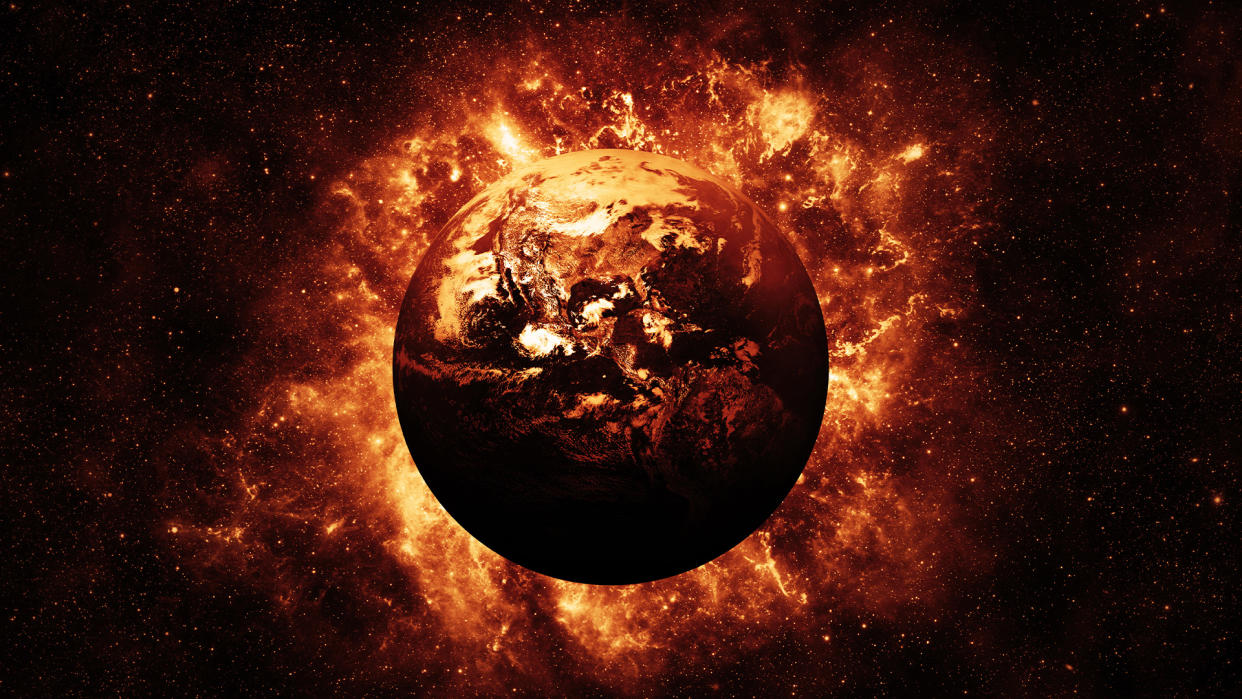How long will Earth exist?

Today, the sun is an essential source of gravity and energy. But one day, it will cause Earth's demise. As the solar system's central star ages, its life cycle will eventually consume our blue marble.
So how long does Earth have until the planet is swallowed by the sun? Expected time of death: several billion years from now. But life on Earth will end much, much sooner than that.
Earth will become unlivable for most organisms in about 1.3 billion years due to the sun's natural evolution, experts told Live Science. And humans could potentially drive ourselves (and countless other species) to extinction within the next few centuries, if the current pace of human-made climate change isn't mitigated, or as a consequence of nuclear war.
Related: Is Earth getting closer to the sun, or farther away?
The death of the sun
The ultimate curtain call for our planet is tied to the evolution of the sun.
"Earth has probably 4.5 billion years before the sun becomes a large red giant and then engulfs the Earth," Ravi Kopparapu, a planetary scientist at NASA's Goddard Space Flight Center, told Live Science. A red giant forms in the final stages of stellar evolution, when the star runs out of hydrogen to fuel its nuclear fusion and so begins to die, according to the European Space Agency.
Once the fusion stops, gravity will take over. The helium core will begin to compress under gravity, which will raise the temperature. That spike in heat will cause the outer plasma layer of the sun to expand dramatically. "The sun will swell up at least to the size of the Earth's orbit," Kopparapu said.
Earth's fate
But Earth likely won't last those 4.5 billion years, and it definitely won't be Earth as we know it.
"You don't have to wait for the outer layers [of the sun] to reach the Earth," he said. The planet will experience extreme heat long before the sun finishes its transition to a red giant. As the sun's dying process turns up the temperature "oceans will evaporate, then the atmosphere eventually goes away, and then the tidal forces of the sun's gravity will shred Earth."
Roughly 1.3 billion years from now, "humans will not be able to physiologically survive, in nature, on Earth" due to sustained hot and humid conditions. In about 2 billion years, the oceans may evaporate when the sun's luminosity is nearly 20% more than it is now, Kopparapu said.
Some life may survive to this point — like the "extremophiles" that live near hydrothermal vents in the ocean floor — but not humans, Kopparapu said.
"Humans — and all complex life — are super needy," Rodolfo Garcia, a doctoral student in astronomy and astrobiology at the University of Washington, told Live Science. In humans, for example, a fever of only 6 degrees Fahrenheit (3.3 degrees Celsius) is life-threatening, he said.
Dangerous wet-bulb temperatures — a combination of temperature, humidity, wind speed, sun angle and cloud cover — in which humans can no longer cool off by sweating are much more imminent, only a few degrees away, Kopparapu said.
The wet-bulb threshold for humans was first predicted to be 95 F (35 C), but newer research suggests wet-bulb temperatures as low as 86 F (30 C) can be deadly.
RELATED MYSTERIES
—Where on Earth does the sun rise first?
—What's the maximum number of planets that could orbit the sun?
—What happened when the dinosaur-killing asteroid slammed into Earth?
Some places on Earth have already reached wet-bulb temperatures exceeding 90 F (32 C) on multiple occasions and climate models predict 95 F(35 C) will be a regular occurrence in regions like the Middle East by the end of the century. At that temperature, animals that sweat will be essentially cooking in the heat, Kopparapu said. In essence, our own greenhouse gases are set to threaten life and society on Earth long before the sun dies.
"If we are talking about human life, the next hundred years are going to be interesting," Kopparapu said.

